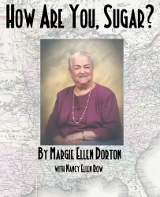Hullo, hullo, 13ers and Usual Suspects,
For my Thursday Thirteen, I am talking about skin. Its color, specifically. It all feels the same, skin, doesn’t it? When you touch it? Stroke it? Caress it? Burn it? Jab it and make it bleed? It bleeds the same. It hurts the same. We all have skin. It’s just that mine is white. Maybe yours is, maybe it isn’t. It doesn’t matter. But some people think it does.
How did I learn about racism? Oh, lots of ways. I’ll work backwards, from this week, as things come to mind:
1) From Cynthia Harris, the principal (African-American) of our neighborhood high school, Jefferson High School, here in beautiful, open-minded Portland, Oregon, USA. (Here are four links, because no one can agree on what one thing Jefferson should be). Harris told a group of parents and community members that “Black kids are different” and “Almost one in four black students at my school is in special education. Something is wrong there.” So they’re “different” and “really different,” apparently.
Harris refused to answer questions posed by a woman (white) who, like me, is an advocate for kids and a community activist. Why wouldn’t she answer her questions? Harris told the woman “(I) don’t understand why people who aren’t African-American think they should have any say in what happens at Jefferson.”
I say: Ms. Harris, be inclusive. If you can’t be, then you need to not work with students or any communities. I’m a community member, and I want to help make things better. Don’t say no to anyone who is trying to help — say yes. Your word should be yes. Yes, yes, yes. Yes, let’s talk. You don’t have to agree to everything everyone wants, that wouldn’t work. But I am asking that you listen to what people have to say, have a conversation, answer the questions that you are able to answer. Communication. Yes.
(This subject is also being discussed by Terry Olson, Hockey God, Willamette Week and KGW-8, Portland’s NBC affiliate. (And over at The Mercury, they’re talking about race as it relates to drug- and prostitution-free zones.) If you see discussions elsewhere, please e me.)
2) I was being a smart-aleck when I said “beautiful, open-minded Portland.” Because, while the scenery is quite beautiful in Portland, the people can be quite ugly. We have a long, hideous history of racism in Portland. I just lit a candle for Mulugeta Seraw and another one for the Coon Chicken Inn and another one for Tony Stephenson and another one for Jose Meija Poot and another one for everyone. And I lit one, too, for the Portland Police officers who thought they should “decorate” the doorstep of a business (black-owned) with dead possums. Maybe I ought to light two for them.
This isn’t all of it — these are just a few “situations” that came to mind.
I am not proud of my city’s heritage, you should be aware of this.
3) I learned about racism when my friends had their house firebombed, windows broken, furniture on their front porch burned, in the early ’90s, by the Skins who lived the next street over. They are an interracial couple — a woman (African-American), her husband (white), and their female roommate (African-American). They chose to leave Portland.
4) When I was in third grade, my girlfriend Teri and I sat down with a table of kids (African-American), at lunch. She proceeded to talk at length about the following: watermelon, and her love of it; her grandparents, and their house in North Portland; did she mention she really loved watermelon?; and how she was always at her grandparents’ house, in North Portland.
I felt really weird, but didn’t know why. I didn’t say anything.
The kids all took their trays and moved to another table. When I asked my mom why, later, she said, “Jesus H. Christ, I cannot believe what an idiot that kid is” and swore for awhile before she explained.
5) In fourth grade, after my dad died, I spent most lunch hours alone on the playground, hoping no one would notice me, and trying not to cry. A pair of twins (African-American) found me. They were a year older than I was, and well-known for their fistfights, which they always won.
“Did your daddy kill hisself?” they asked me.
That’s when I started thinking that black people were mean, and would beat me up if they saw any weaknesses.
6) Then there was fifth grade, when I heard one of the older girls, an eighth-grader (African-American), tell another eight-grader, boy (African-American), “Boy, you are fucking with my nerves.” We did not talk like that at my house and that’s when I learned, sometimes black girls can be mean, but they totally fucking rock. Fuck yeah.
7) Then there was sixth grade, when Paula (African-American) beat me up. I deserved it, I was being a jerk to Dina (bi-racial — African-American and white) and really, I totally deserved it. But they were both friends with me, after that. Dina used to come into the pharmacy where I worked, and the restaurant where I waited tables, just to say hi. Her mom did, too. She’d say, “Dina says hi.”
I ran into Paula a few years ago — it was so good to see her. I told her I had heard that Dina was killed in a car accident, when we were all in our early 20s. It was her husband, I heard. He wanted her dead, there was domestic violence. (I didn’t tell Paula that part; her daughters were there.) Paula told her daughters, “We were all friends.” And I told them, “You just never know how things are going to turn out, so we need to all be good to each other.”
I should light a candle for Dina, too, don’t you think?
9) We had race riots at my school — “Black versus white! Black versus white!” a few kids would scream. They’d all spill out to the park. Some guys (African-American) would break out cake-cutters. They were metal and sharp. Some guys (white) would threaten to have knives, but they only occasionally did. I would watch from the playground next to the park, then I would walk home. Then my mom would ask, “Why are you home early?” and I would say, “Fight.” Where were the grown-ups? I have no idea. Smoking in the teachers’ lounge, I imagine, and complaining about us.
10) I found out that some kids (white) from my neighborhood were being bussed to schools (black), far, far away, in North Portland. (I went to school in Northeast, ten minutes from North). And some kids (black) were being bussed from schools (black) in their neighborhood (North) to my school. Everyone getting on and off the busses seemed to be in a bad mood. There were a lot of fights on that end of the building. I learned to keep my distance. I learned that a lot of times when people got sick of talking they used their fists.
11) Then there was my maternal grandma (white) from Dakota (North) who called Brazil nuts “nigger toes.” Then there were my mom’s relatives (white) from the south who said, “You want some good barbecue, you go get some of that nigger barbecue.”
12) I learned about racism when I fell in love with a man (black) and another man (brown). I learned about racism when I was on jury duty and they asked us, one by one, if we’d ever been involved in an interracial relationship. If you had been, you were disqualified.
“Did you notice that people stared at you when you walked down the street?” the lawyer asked.
“Yes,” I said, “But I just thought it was because we were so good looking.”
13) I learned about racism while we were planning our 20th high school reunion in 2002 and the former cheerleaders (white) insisted on having the reunion and picnic in ritzy areas of town (white) where I told them that a lot of my old friends (African-American and Asian) wouldn’t “feel comfortable” going.
Is that the most stupid expression ever? “Feel comfortable”? “It makes me uncomfortable”? But I didn’t know how to put it. I suggested Peninsula Park, in North Portland. I had talked with Paula, who had talked with some of the other alums. They had asked for Peninsula Park. Cheerleader frowns all around. “It’s too dangerous there.”
It made them “uncomfortable.”
How many guests of color at my reunion? Three (Asian, African-American, African-American.) There were close to 400 kids in my graduating class, which was maybe 60 percent white, 20-25 percent Asian, maybe 15-20 percent African-American and a few Hispanic kids.
Three people.

















